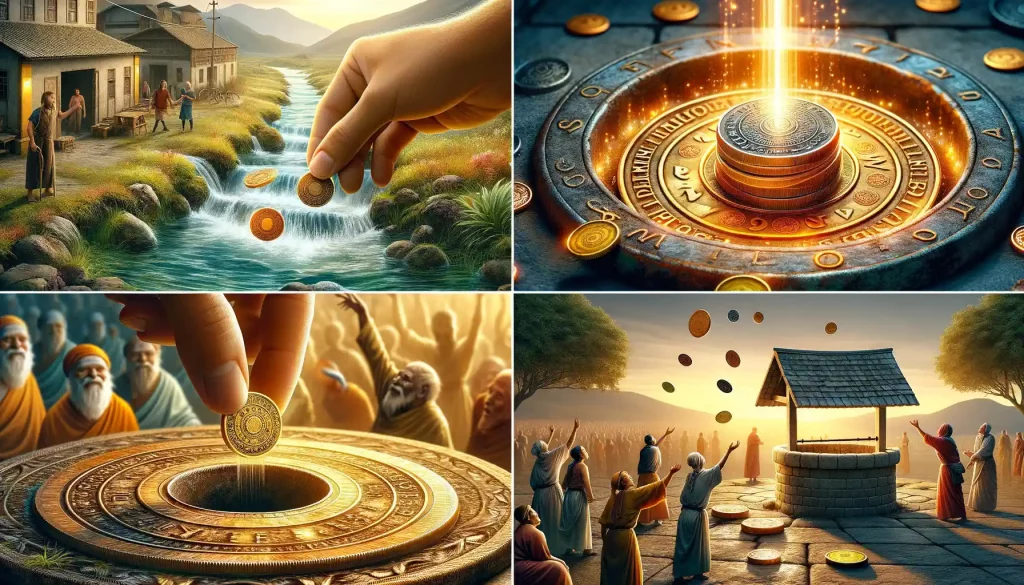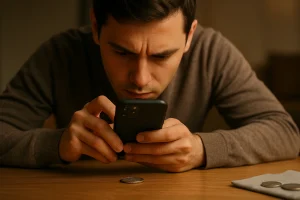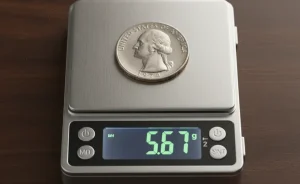Historical Significance of Coins in Religious Ceremonies
Coins as Sacred Messengers Through Time
From the gleaming temples of ancient Rome to the serene sanctuaries of Greece, coins have been more than just currency; they’ve been sacred messengers. Picture this: a coin, heavy with symbolism, is dropped into an altar’s flame, its metallic sheen glowing briefly before disappearing into ash. It wasn’t just an offering—it was a direct communication with the divine, a whispered prayer made tangible.
In many cultures, coins were seen as conduits between mortals and gods. They carried hopes, fears, and pleas. Consider the Roman practice of tossing coins into sacred fountains. This wasn’t a mere act of superstition; it was a deeply personal connection to gods like Fortuna, goddess of luck, or Neptune, ruler of waters. Every toss was a wish—an intimate gesture imbued with faith.
Golden Expressions of Gratitude
Coins weren’t merely gifts; they symbolized gratitude and devotion. In Asian traditions, for example, offerings of coins at shrines were often polished to perfection, a sign of respect. Even today, sacred coins blessed in rituals are revered as tokens of protection and prosperity.
- In China, the use of round coins with square holes symbolized unity between heaven (circle) and earth (square).
- In Hindu customs, priests bless coins during ceremonies, making them powerful charms.
With every coin offered, ancient worshippers believed they were heard, their silent desires carried to celestial realms.
Symbolism and Cultural Meanings of Coins in Rituals
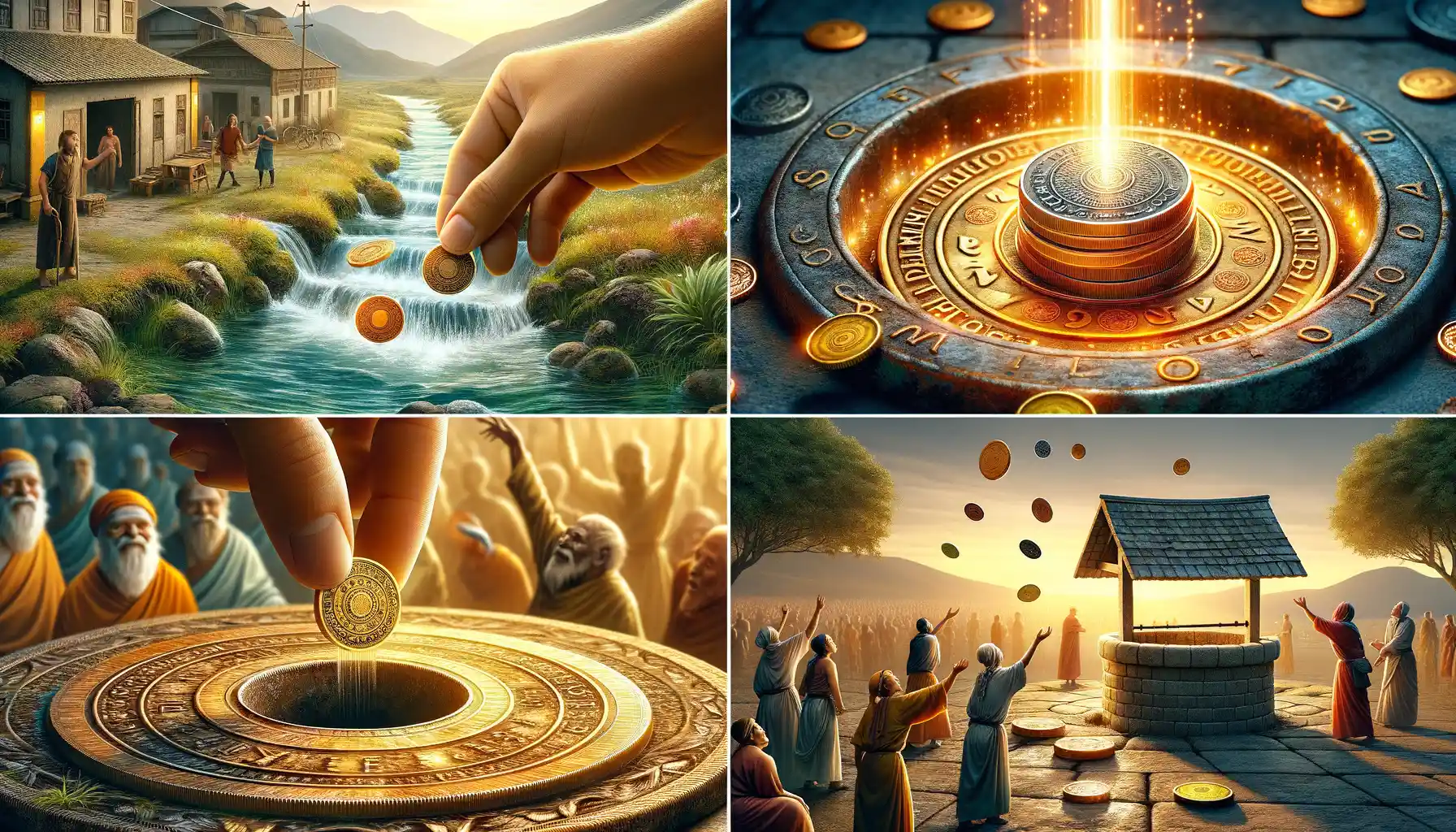
The Deeper Spirit of Coins in Ancient Practices
Coins were never just cold, lifeless metal; they pulsed with meaning, carrying stories and beliefs far beyond their monetary worth. In rituals, their shining surfaces reflected not just light but hope, gratitude, and the deep interplay between humans and the divine.
Think about this: the circular shape of a coin? It wasn’t random. For many ancient cultures, it symbolized cycles—of life, death, rebirth, seasons, or even celestial orbits. Their perfect roundness whispered of unity, eternity, and harmony. Placing such an object in an offering was like slipping a piece of the cosmos into the hands of the gods.
And let’s not forget the intricate designs! Engravings of animals, deities, or celestial bodies weren’t just decorative. A Roman coin featuring Jupiter wasn’t just money—it was a whispered prayer for strength, victory, and divine favor. Coins silently spoke the language of intention, bridging everyday life with sacred realms.
Archaeological Evidence of Coin Use in Offerings

Unearthing Ancient Offerings: Coins Beneath Sacred Sites
Picture this: a dusty excavation site, buzzing with archaeologists brushing away centuries of dirt. Suddenly, amid broken pottery and relics of the past, they uncover a small glimmer—coins nestled in ancient altars or buried near temples. These discoveries are not just chance finds; they’re whispers from history, telling us how civilizations used coins as sacred offerings to bridge the mortal and divine.
In many digs across the Mediterranean, such as in ancient Greek sanctuaries or Roman shrines, coins appear in curious abundance. Why? Because coins were more than currency—they symbolized gratitude, devotion, and hope. Whether tossed into sacred fountains or sealed in graves, they often carried spiritual weight far beyond their economic value.
- At the Temple of Artemis in Ephesus, archaeologists found hundreds of coins buried beneath its steps, likely gifts to the goddess.
- In Celtic burial mounds, coins were placed as a payment for safe passage into the afterlife.
Every coin unearthed carries a story, a small but profound act of faith etched into metal, waiting centuries to meet our gaze.
Coins as a Medium for Spiritual Communication

The Whisper of Metal: Coins in Spiritual Connection
Picture this: a single coin, cool in your palm, its edges worn smooth by countless hands over centuries. To the ancients, this wasn’t just currency—it was a bridge, a way to transcend the physical and tap into the unseen realms. Coins carried weight not just in metal, but in meaning, becoming vessels for messages between worlds.
Why coins? Think about it. They’re durable, portable, and often adorned with sacred symbols or the faces of rulers believed to be divine. Sending prayers or intentions through coins made sense. They were tangible, yet imbued with spiritual energy. For example, in ancient Greece, people placed coins under the tongues of the deceased as payment to Charon, the ferryman of the underworld. Those coins weren’t just offerings; they were tickets to eternity.
- In Roman rituals, coins dedicated at temple altars invited blessings from gods.
- Chinese traditions saw coins tied together with red threads, symbolizing protection and harmony.
Hold a coin today. Feel its history. You might just sense a faint echo—a vibration of prayers, hopes, and whispers it has carried. Like an interpreter between realms, it speaks, if only you’ll listen.
Modern Interpretations and Relevance of Ancient Coin Rituals
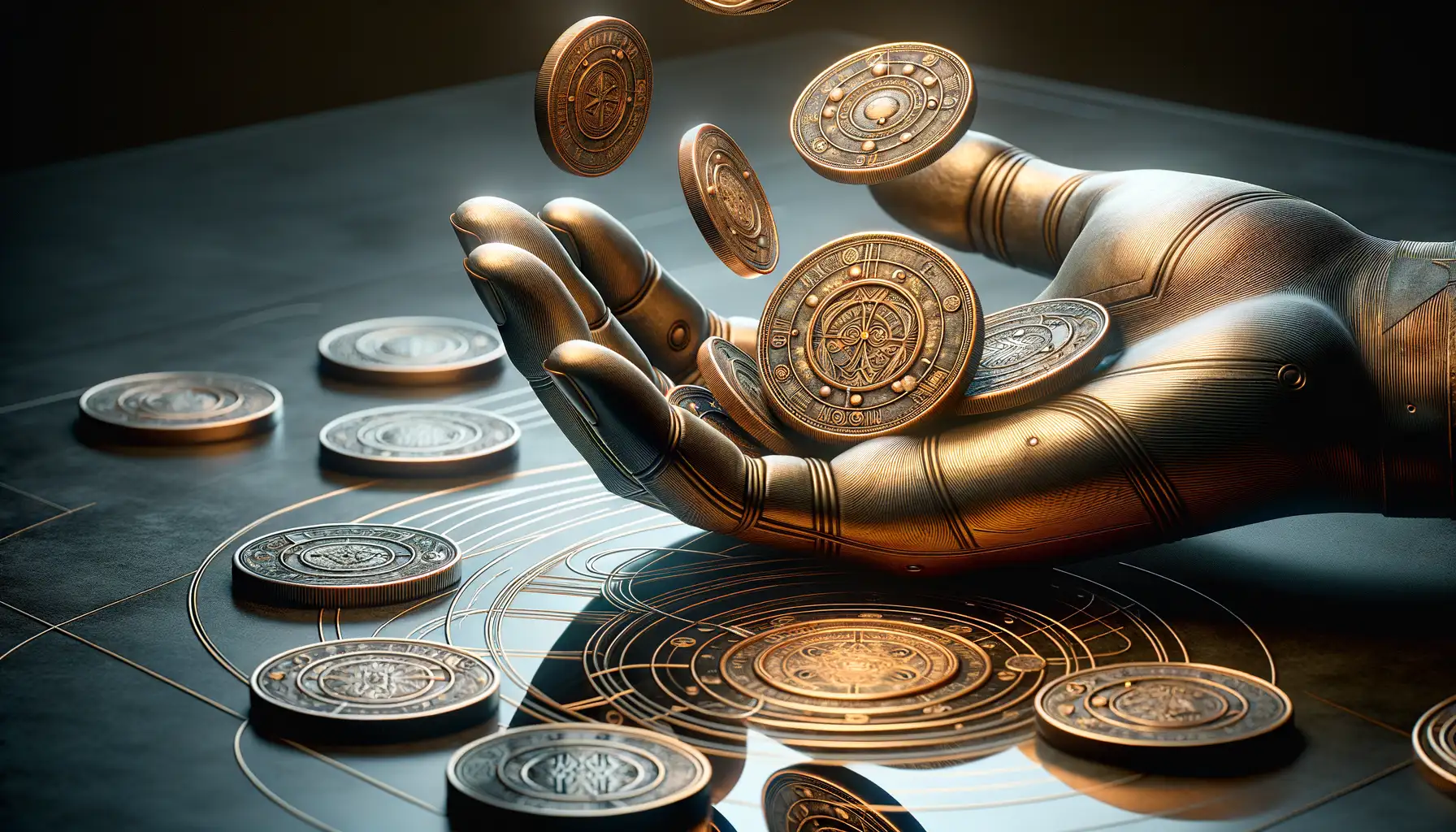
Breathing New Life into Ancient Rituals
Coins, those small, unassuming pieces of metal, have become so deeply ingrained in modern life that we often forget their roots stretch deep into sacred rituals. Today, the echoes of ancient practices are woven into our everyday lives in ways that feel both accidental and intentional.
Think about it: tossing a coin into a fountain as you make a wish. This isn’t just a whimsical act—it’s a direct descendant of ancient offerings to water deities! It’s incredible to think your spare change could carry whispers of Roman or Celtic traditions, where coins were left in sacred springs to ensure blessings or healing. It’s as if, through time, we’ve inherited a *silent agreement with the universe*.
How Ancient Coin Traditions Shape Modern Customs
Many rituals from centuries ago have taken on fresh meanings today, blending spirituality with simple joys. For instance, consider these examples:
- Wedding wishes: The tradition of placing a coin in the bride’s shoe traces back to symbolic “prosperity charms” used in pagan ceremonies.
- Lucky finds: Ever picked up a coin “heads-up” and felt a pinch of fortune? That belief stems from ancient talismans thought to protect travelers or warriors.
So, the next time you flip a coin before making a decision, pause for a second. Maybe, just maybe, you’re carrying forward a ritual older than written history.

